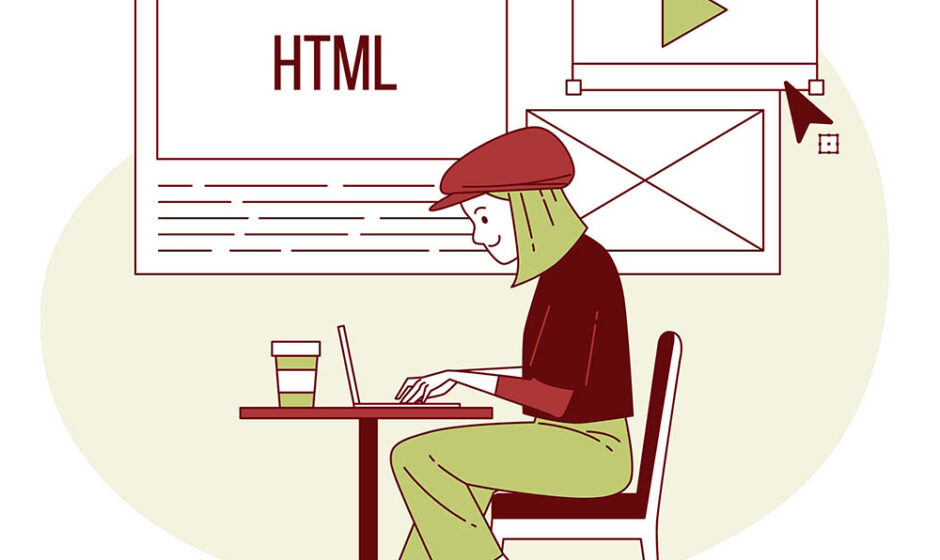Free Online HTML Formatting Tool
Introduction
HTML (Hypertext Markup Language) is the foundation of web development, responsible for structuring content on webpages. As projects grow more complex, maintaining clean and well-structured HTML code can become challenging. This is where Free online HTML formatter tools come into play. These tools help developers organize their code, making it more readable, efficient, and easier to maintain.
A properly formatted HTML document not only simplifies collaboration but also ensures better performance and compliance with web standards. In this article, we will explore what HTML formatters are, how to beautify HTML code, the best tools available for designing HTML, and why maintaining a strong and correct HTML format is crucial for successful web development.
What Are HTML Formatters?
An HTML formatter is a tool that automatically organizes and beautifies HTML code, improving its readability and structure. These tools adjust indentation, correct the layout of tags, remove unnecessary white spaces, and ensure that your HTML adheres to best practices.
HTML formatters are essential in the development process for the following reasons:
- They enhance code readability, making it easier to navigate large projects.
- They ensure consistent coding standards, especially when multiple developers are working on the same project.
- They help catch errors like unclosed tags or improperly nested elements.
Key Features of HTML Formatters:
- Automatic Indentation: Ensures that all nested tags are correctly indented for visual clarity.
- Whitespace Removal: Removes excess spaces and empty lines that clutter the code.
- Tag Validation: Checks for proper opening and closing of tags, reducing the likelihood of errors.
- Customizable Preferences: Many formatters allow users to customize the indentation style, such as spaces versus tabs or the number of spaces.
- Error Checking: Some advanced tools even detect errors and offer suggestions for improvements.
How to Beautify HTML Code?
Beautifying HTML code is an important step in the web development process. Clean code is easier to read, debug, and maintain. When developers format their HTML properly, it reduces confusion and makes collaboration easier, especially in larger teams.
Steps to Beautify Your HTML Code:
- Copy the HTML Code: Select and copy the HTML code that you want to format. This can be from your project or any HTML snippet.
- Use an Online HTML Formatter: Paste the copied code into a free online HTML formatting tool like HTML Tidy, Code Beautify, or Prettier.
- Customize Formatting Preferences: Depending on the tool, you may be able to adjust settings such as the indentation style, whether line breaks are added, or if inline elements are compressed.
- Click Format or Beautify: Once the code is pasted and settings are chosen, simply click the “Beautify” or “Format” button.
- Copy the Formatted Code: After the code has been beautified, copy the newly formatted HTML and paste it back into your project.
Beautifying HTML not only enhances readability but also ensures that your code follows a structured and logical format.
What Is the Best Tool to Format HTML?
Several tools are available to help format and beautify HTML code. Each has its strengths, and choosing the right one depends on your specific needs and preferences. Below are some of the top tools for formatting HTML:
1. HTML Tidy
HTML Tidy is one of the most widely used tools for cleaning up and validating HTML code. Originally developed to clean up poorly formatted HTML generated by Word processors, HTML Tidy is now a versatile tool that improves the structure of HTML while also checking for errors and accessibility issues.
2. Prettier
Prettier is a popular tool among web developers because it formats multiple languages, including HTML, CSS, JavaScript, and more. It enforces a consistent style across the entire project and can be integrated into many popular code editors like Visual Studio Code and Sublime Text.
3. Code Beautify
Code Beautify is a simple, easy-to-use tool that allows you to format HTML, CSS, and JavaScript code quickly. It offers various options to customize the formatting style, including setting indentation sizes and whether to wrap lines.
4. Beautify Tools
Beautify Tools is a free online service that supports multiple formats, including HTML, CSS, and JSON. It’s designed to clean up messy code, removing unnecessary white spaces and ensuring proper tag nesting.
5. DirtyMarkup
DirtyMarkup is a fast and straightforward tool for cleaning up disorganized HTML, CSS, and JavaScript. It’s perfect for developers looking for a quick solution to improve the readability and structure of their code.
What Makes a Strong HTML Format?
A strong HTML format means the code is not only readable but also logically structured, efficient, and easy to maintain. A well-structured HTML document improves the performance of the website and ensures that it renders correctly on different devices and browsers.
Key Elements of a Strong HTML Format:
- Consistent Indentation: Proper indentation is crucial for readability, especially when HTML elements are nested inside one another. It makes the hierarchy of elements clear and easy to understand.
- Semantic Tags: Using the appropriate HTML tags (e.g.,
<header>,<article>,<footer>) adds meaning to the content. This not only improves SEO but also makes the webpage more accessible to users with disabilities. - Tag Nesting: Proper tag nesting ensures that parent and child elements are structured correctly. For example, a
<ul>tag should always contain<li>tags. - Minimal Redundancy: Avoid unnecessary tags and inline styles. Reducing redundancy improves both performance and readability.
- Readable Class and ID Names: Use meaningful names for class and ID selectors to make the code more understandable for future developers.
What Is the Correct HTML Format?
The correct HTML format is not just about how the code looks but also about adhering to web standards and best practices. Following these standards ensures that your HTML is well-structured, performs optimally, and is compatible with all browsers.
Correct HTML Formatting Rules:
- Always Use a DOCTYPE Declaration: Start your document with
<!DOCTYPE html>. This ensures compatibility with modern browsers. - Proper Tag Closure: Ensure that every opening tag has a corresponding closing tag, and use self-closing tags where appropriate (e.g.,
<img />or<br />). - Consistent Use of Quotes: Attribute values should always be enclosed in double quotes (e.g.,
<img src="image.jpg" alt="description">). - External Resources: Use external CSS and JavaScript files instead of embedding styles or scripts within the HTML document. This keeps the HTML clean and improves page load times.
- Semantic HTML: Structure the content using semantic elements like
<section>,<nav>, and<article>, which improves both SEO and accessibility.
By following these guidelines, you can ensure that your HTML code is both functional and aesthetically pleasing.
Conclusion
Using a free online HTML formatting tool is essential for any web developer looking to maintain clean, organized, and efficient code. Tools like Prettier, HTML Tidy, and Code Beautify help you automatically format your HTML, ensuring that your code is readable and compliant with industry standards.
Maintaining a strong and correct HTML format is not just about aesthetics; it improves website performance, enhances collaboration between developers, and ensures compatibility across different browsers and devices. Whether you are working on a personal project or a large web application, investing time in learning how to properly format HTML will ultimately lead to better code quality and smoother development.
With the right tools and practices, you can easily keep your HTML code clean, organized, and ready for future updates.



